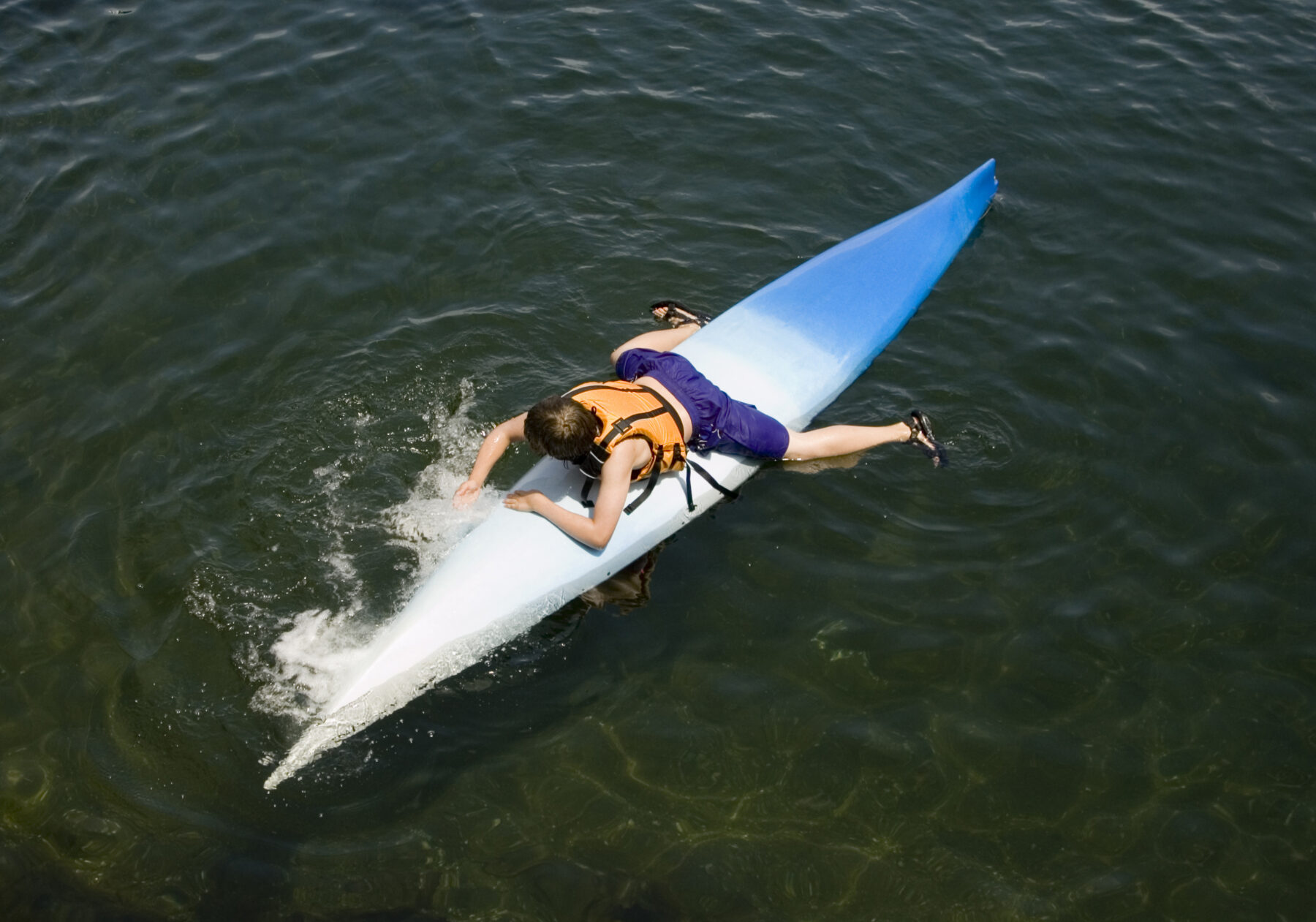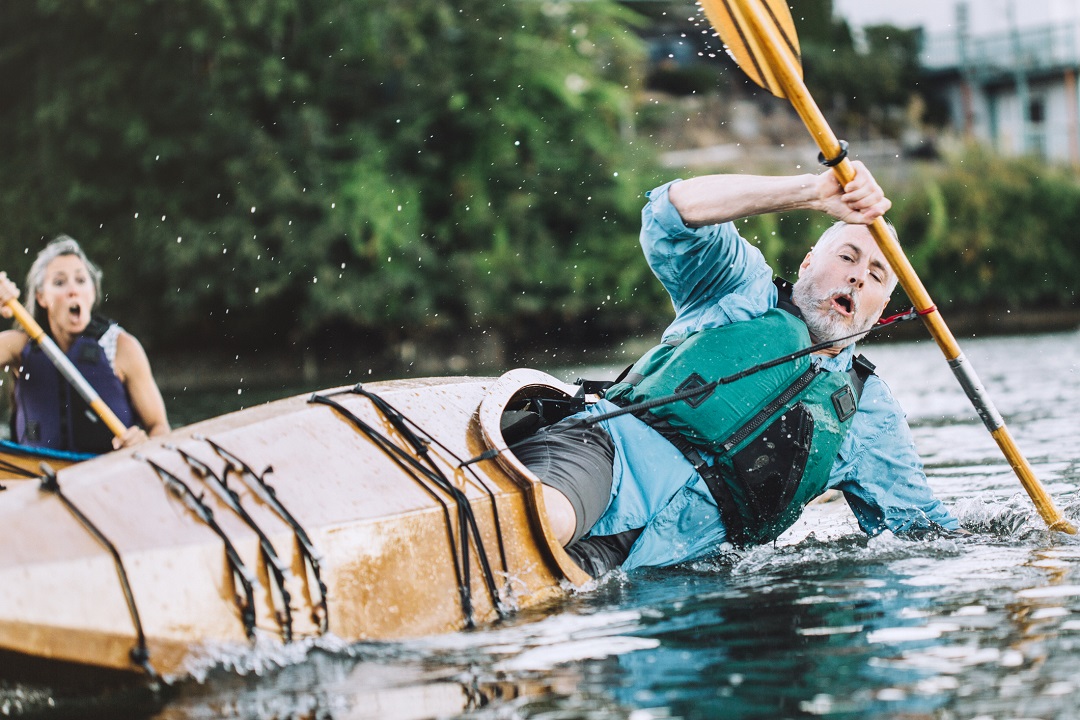There I was, at 67, the oldest person in the kayak instructor training class, almost twice as old as the other participants. So, who was selected to demonstrate boat-over-boat rescue in deep water? You guessed it.
My partner in this endeavor was a strapping young park service ranger, while there I was with multiple joint replacements, including a shoulder that tended to slip out of its socket. The rest of the class was watching intently, as was the instructor.
We both flipped our kayaks and treaded water while holding onto the boats and paddles. Together, we maneuvered his boat over my capsized boat and rocked it to empty it of water. After we turned his boat upright, I held both boats steady while he hauled himself up and crawled into his cockpit. Then, it was my turn.
Getting my kayak up and over his boat so he could empty it and then flip it over and back into the water wasn’t difficult. The challenge came with pulling myself up and over the boat to climb back in. I tried twice without managing to get my leg or butt anchored in the cockpit.
I had been in the water for a long time and was tiring, and I knew I only had one more try in me. Summoning all my strength, I kicked hard and pulled myself up and over the cockpit. It was then that my artificial shoulder slipped out of the socket.
There I was, sprawled on top of the boat, with an audience watching, in pain and unable to move my arm. I yelled at my partner to grab my hand and pull. He did, and my shoulder snapped back into place. I swung my legs up and got back in my kayak. Mission accomplished.
Practice Makes Perfect
Practicing rescue skills is one of the most important things you can do for safety on the river. You need to have performed the skills enough times in a safe setting that you will be able to do them under stress in an emergency.
You can find plenty of videos on YouTube that demonstrate various types of self-rescue, but the best way to learn is by doing. The St. Louis Canoe & Kayak Club and Paddle KC (you can find them both on Facebook) offer skills training workshops each year. If those are too far away from you, check with your local paddling clubs.
An excellent source for training, for both in-person classes and online videos, is the American Canoe Association (ACA). Classes range from introductory paddling courses to advanced level instructor training. Go to americancanoe.org and click on the Education tab. The ACA serves all paddle sports, including canoe, kayak, stand-up paddleboard, raft, and rescue.
Basic Rescue Skills
Being prepared is the first step in rescue. Always wearing your life jacket is the No. 1 rule. Accept the fact that at some point you will capsize; it’s part of paddling, regardless of your skill level. Always remember that people come first. Sometimes, you’ll have to let go of a boat, paddle, or other gear to avoid being swept into downstream hazards. The gear usually can be retrieved later; saving the person is the most important.

Young boy straddles an upturned kayak.
The most basic self-rescue is to simply wade or swim to the nearest safe shore with your kayak. If you’re on a large lake and the shore is far away, try to stay with your boat; it provides flotation and is readily visible to rescuers and other watercraft.
In moving water, be sure to stay on the upstream side of your kayak to prevent trapping yourself between the boat and any obstruction. You might need to let go of the boat and swim to safety. Remember this catchy phrase: Bottom down, feet up. Float on your back with your bottom hanging down and your toes near the surface of the water, pointing downstream. This keeps your feet from becoming caught on rocks, logs, or other hazards. Don’t stand up until your bottom touches the bottom of the river, which should put you in water less than knee deep.
If the shore is too far away, you’ll need to reenter your kayak from the water. Here’s how to do that, according to “Essentials of River Kayaking” by the ACA:
“One method is to crawl up on top of the boat from the stern with your legs straddling the boat. Bring your legs forward and slide into the seat when you reach it. If your boat is very wide, you can enter from the side. Begin by placing your hands on both sides of the cockpit rim near the wide section of the kayak, although hand placement may vary due to kayak width and stability, arm length, and paddler strength.…Pressing down with both hands and using a strong kick, lift the body upwards until the hips are across the near side. Roll onto your back and sit inside the kayak before bringing in your legs.”
This might sound easy, but balancing the boat during these movements is tricky and requires practice. (Voice of experience talking!) A nearby boater can help by holding the cockpit rim or the opposite side of your boat. Using a rescue sling or paddle floats can make reentry easier, but using them requires practice, too.
But if this senior paddler with replacement parts can do it, so can you!
Author: Barbara Gibbs Ostmann is a contributor to Terrain Magazine.


Leave A Comment